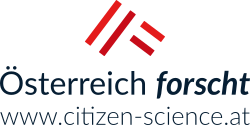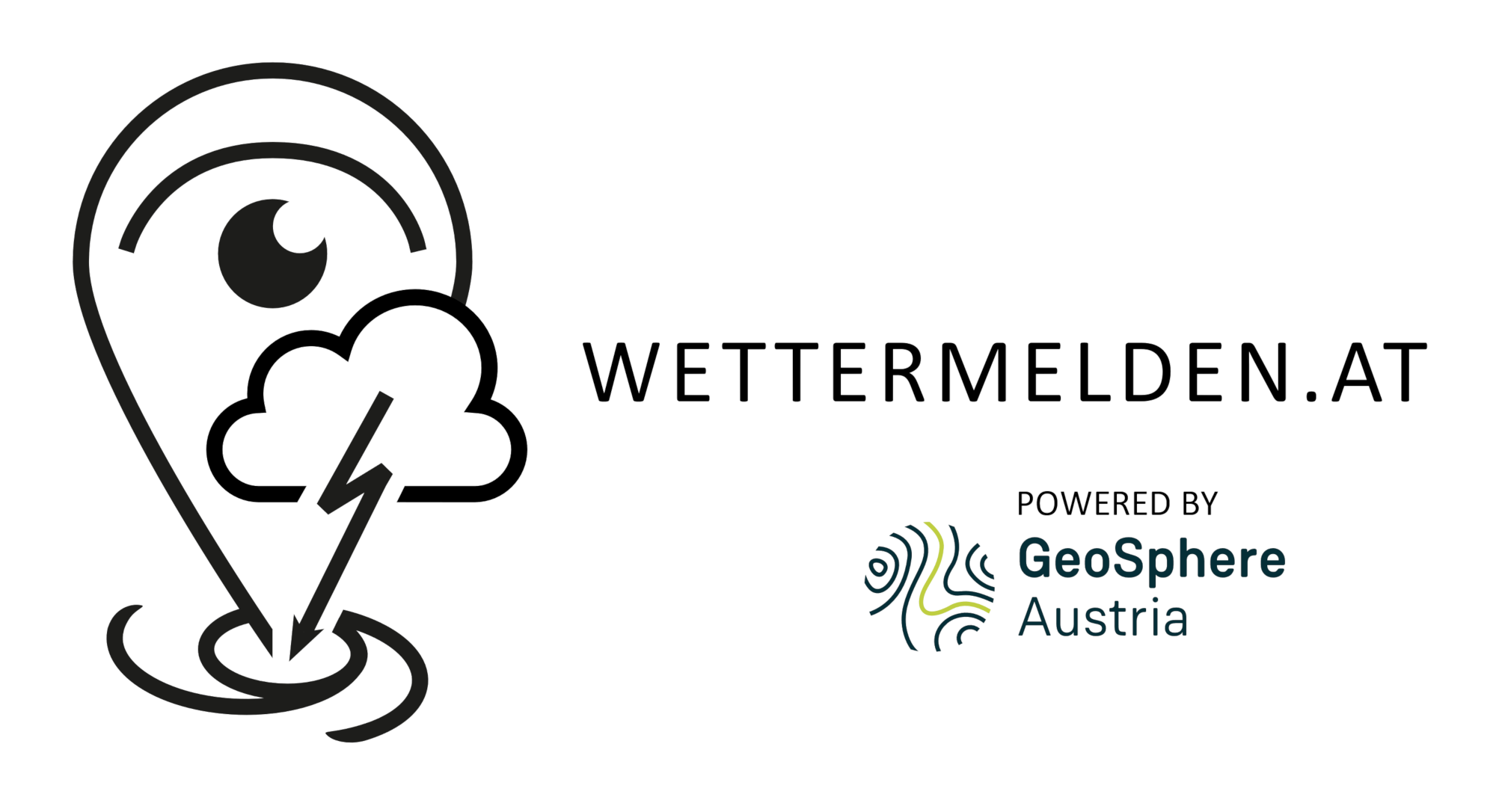
1190 Vienna
Wettermelden.at / Trusted Spotter Network Austria
Many weather phenomena as well as their impacts and damage on the ground are reported in real time or immediately after the event by means of weather reports. Within the framework of the Trusted Spotter Network Austria, all reporters can be trained to become particularly trustworthy observers. All weather and impact reporting parameters as well as the training and competence levels of the observers are comparable throughout Europe.
Why weather reports?
A large number of automatic weather stations at the Austrian national weather service GeoSphere Austria can measure atmospheric variables like temperature, air pressure, wind direction and strength with high accuracy. The actual effects of weather, especially extreme weather on the ground, such as storm damage, hailstones, tornadoes, avalanches, mudflows or rockfall, black ice, forest fires and others cannot be measured with automatic weather stations. Human observations are still necessary for this purpose.
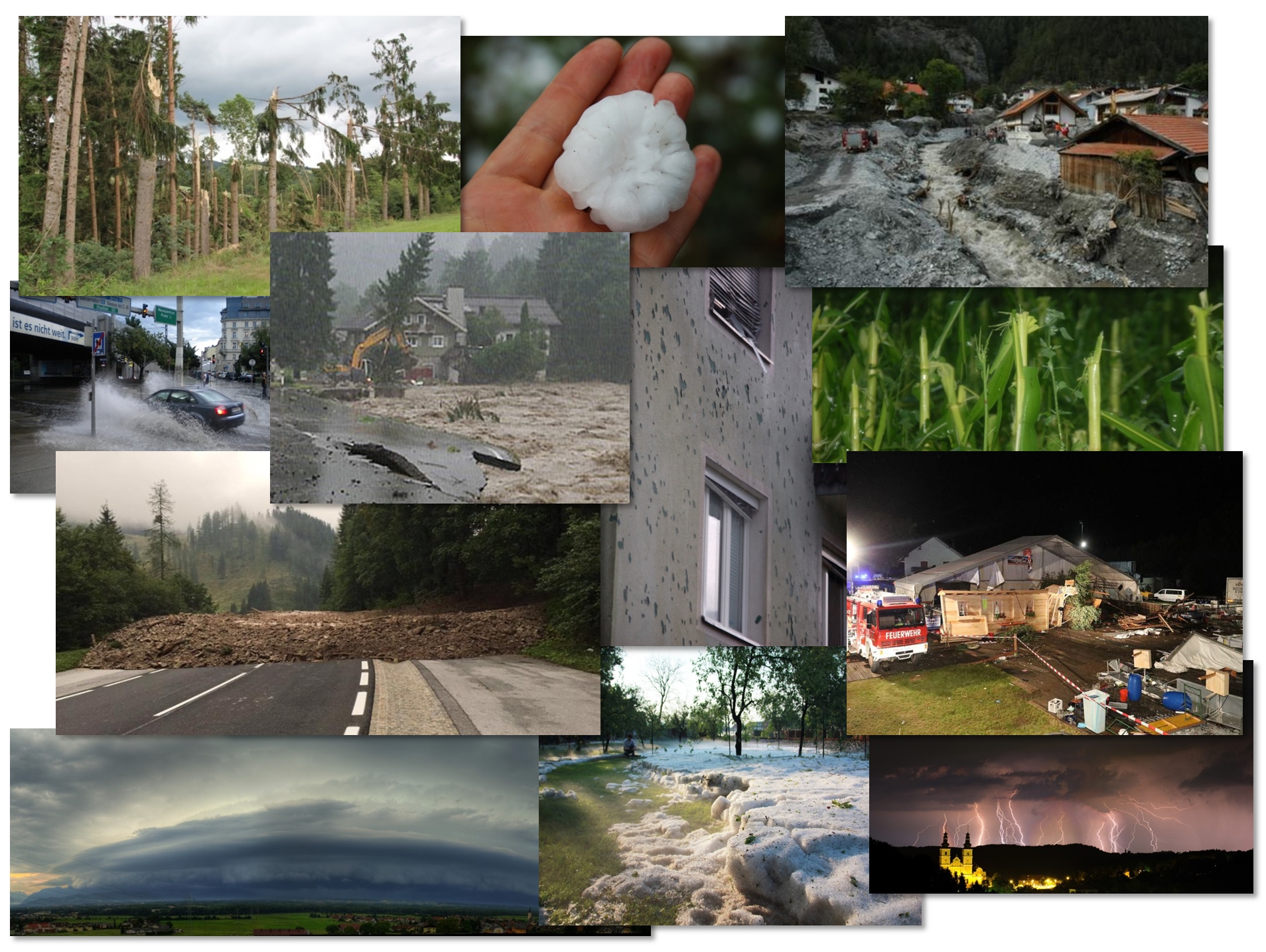
This is how it works!
Any person can report the weather with mobile devices such as smartphones or tablets, regardless of time and place. No need to download or install a native smartphone app! Activate the mobile data connection and the automatic localization of your device, call up www.wettermelden.at in your browser and select the appropriate reporting parameter with the plus symbol. A photo always helps to better describe the impacts of the weather. If required, also add a describing text message, send the report, done. For brief instructions (in German), click here.
Who can participate in the research?
Everyone who can operate a mobile device such as a smartphone or tablet are recommended to participate from around 12 years of age. Weather is of everyone's interest - many of us are even more interested weather enthusiasts. Extreme weather events in particular affect our society and thus directly our everyday lives and modern society. Such extreme events, but also extraordinary weather phenomena, motivate many people to share their experiences with others in different ways. With the web app wettermelden.at GeoSphere Austria offers an independent platform for documenting weather and weather impacts. This enables real-time feedback for both weather warnings and weather forecasts. Additionally, weather reporters also support climate impact research and forensic weather damage research. This clearly benefits national public weather services and science.
Do you need preceding weather knowledge to report the weather and its impacts?
Neither to operate the web app www.wettermelden.at nor for correct reporting any preceding knowledge is needed. Our web app can be used largely self-explanatory and each individual reporting parameter is directly described in short keywords. For those with deeper interest in weather, the national weather service GeoSphere Austria offers a specific training programme for voluntary weather observers, the Trusted Spotter Network Austria.
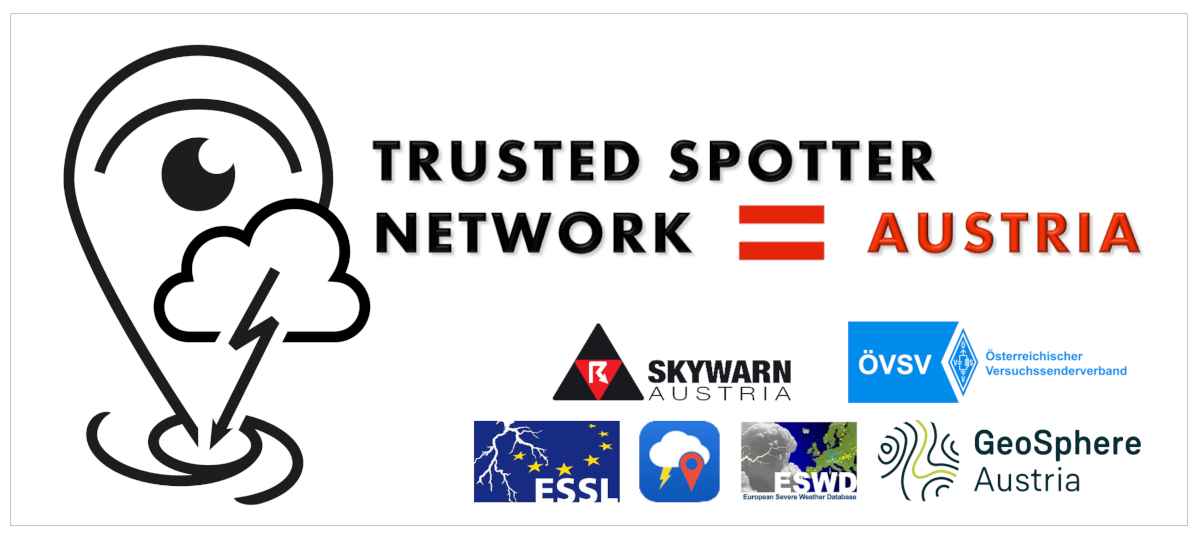
The Trusted Spotter Network Austria
The Trusted Spotter Network Austria, TSN, started in 2009 as a cooperation between SKYWARN AUSTRIA, the European Severe Storms Laboratory ESSL in the form of the European Severe Weather Database ESWD and the Central Institute for Meteorology and Geodynamics ZAMG (now GeoSphere Austria).
At a later stage, amateur radio operators of the Austrian Association of Experimental Broadcasters (ÖVSV) also participated as Amateur Radio Spotters (ARS) and Trusted Spotters. At present, TSN is open to all weather enthusiasts, independent of membership to an organization.
So what makes TSN unique in Europe?
First of all, the training: GeoSphere Austria offers a visiting and training programme at all GeoSphere regional centres for all graduates of the basic training. Here, the Trusted Spotter receive individual training and are thus sensitized to the needs of forecasters during warning situations and further trained in recognizing the effects of the weather on the ground correctly.
For this activity, the spotters (weather observer, stationary) or chasers (thunderstorm chaser, mobile) have access to real-time weather information via a GeoSphere data portal, the interpretation of which is also the subject of training. Depending on the level of training of the observers, individual messages in the database can be distinguished on the basis of competence and reliability:
- Messages from observers without training are assigned the reliability level 0 (RL0).
- Observers with basic training report with competence RL1 (plausibility checked). The training is carried out in the Skywarn or ÖVSV associations for their members with active status. Soon an independent ZAMG - online portal for the completion of the basic training will also be available for all interested persons even without a membership within an association.
- The highest level of training to become a Trusted Spotter is a two-step programe exclusively at GeoSphere Austria locations. On the one hand in the form of individual job shadowing, on the other hand with the regular workshops, which mostly take place in hybrid form at the GeoSphere locations as well as online, thus independent of the travel distance. Certified TSN members report with RL2 - competence as confirmed reliable source.
Through lectures, case studies, damage analyses and intensive technical discussions, the workshops provide extensive scientific exchange, which always benefits both weather enthusiasts and full-time meteorologists.
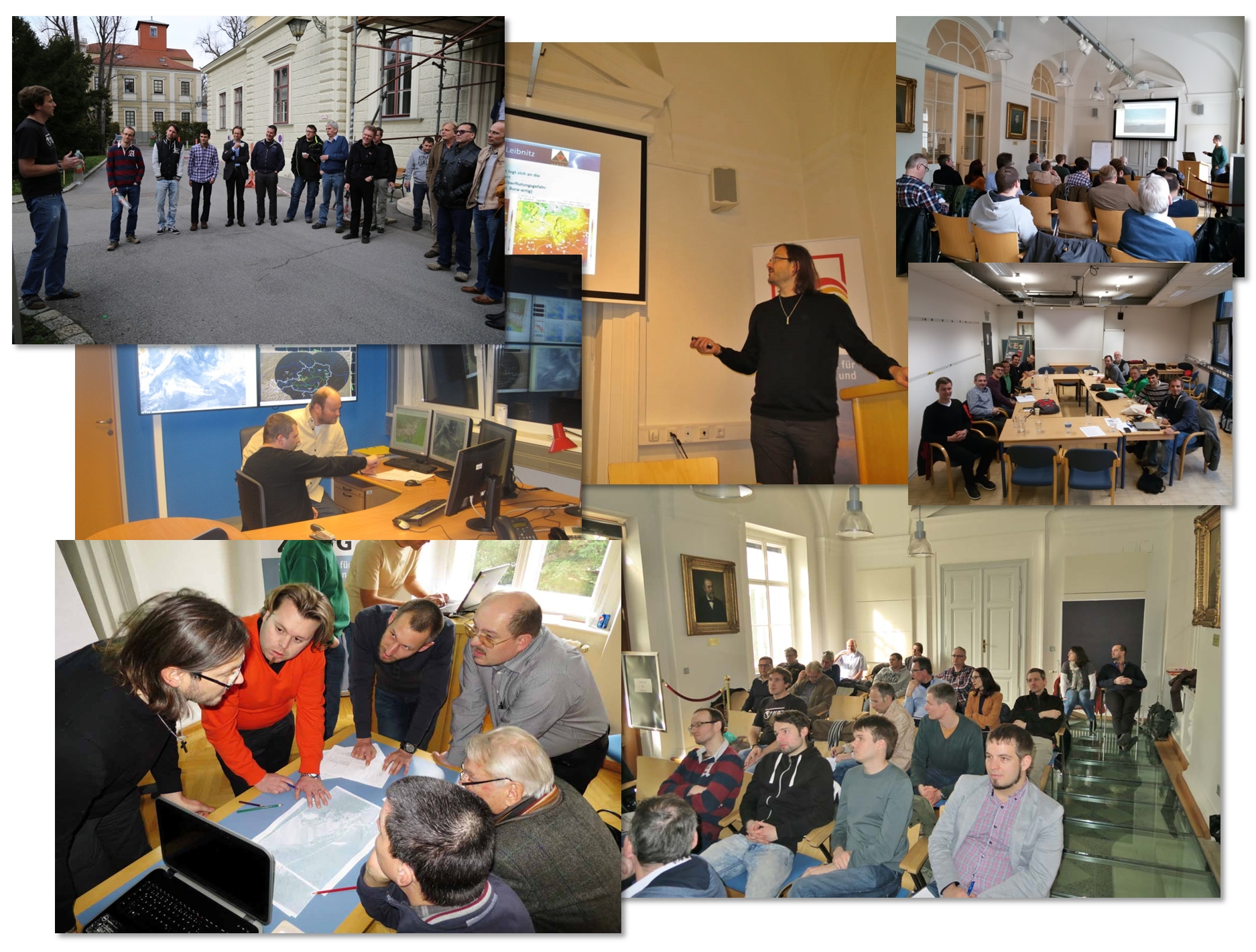 (c) Wettermelden.at
(c) Wettermelden.at
Our outreach platform trustedspotter.eu is available as a contact point for everyone. Here you can find lots of background information on all reporting parameters in the form of a glossary. Interested parties can also register online for the Trusted Spotter workshops or for a personal training to become a Trusted Spotter.
Internationally valid reporting guidelines
GeoSphere Austria is also engaged in the national and international standardization of human weather and impact reports. All reporting parameters are identical to those of the EWOB database of the ESSL and can be exchanged in real-time between all levels (nationally to internationally) via APIs. Reported weather damages above a specific damage threshold are transferred to the internationally standardized, scientific European Servere Weather Database (ESWD).
Also, reliability levels of individual reporters based on their respective training levels are internationally comparable and thus can be exchanged between databases. This interoperability of weather and impact observations and reports is of particularly high scientific value for estimating long-term climate- and severe weather trends.
In its cooperation between the national weather service, weather enthusiasts and science, the TSN is unique in Europe and in this context regarded as "best practice" by the European Meteorological Society EMS.
What happens with the weather reports?
Current weather and impact reports reach forecasters in real time and help to improve impact-related weather forecasts and warnings. The human weather and impact messages provide reliable information on the so-called "ground truth". This instantaneous feedback loop provides reports to the GeoSphere duty forecaster within seconds from being sent via the app. Thus, observers communicate directly if their forecast is correct at the time and place or if their weather warning correctly estimated the intensity of a storm. Ideally, weather warnings are adapted immediately to avoid unexpected damage or even injuries.
Furthermore, weather and impact reports serve as a basis for case studies and climatological evaluations of extreme weather events and their damage. In this way, the frequency of extreme weather events and the vulnerability of our society to weather damage will be recorded more precisely. All Austrian weather and impact reports will be stored in a national GeoSphere database and made available in exchange with other European national weather services in anonymized form for warnings and research.
Standardization and quality management of the reports enable other automatic applications such as the analysis of cloud photos or data assimilation in impact-, nowcasting- and forecast models. Reports on damage caused by thunderstorms provide the basis for further, more in-depth forensic analyses of down gusts or tornadoes. These application examples show the importance of the training and reliability of the individual spotter. Received images and videos support outreach and public relations activities shortly after an extreme weather event.
Podcast
Project coordinator Thomas Krennert was a guest on an episode of the Österreich forscht podcast "Wissen macht Leute" in June 2022 - those interested in learning more about the project can listen to the episode here (in German). In addition, Thomas Schreiner, a dedicated Citizen Scientist in the project, gave interesting insights into the project in March 2023 - tune in!
Citizen Science Seminar
In 2021, poject coordinator Thomas Krennert also held a lecture about Wettermelden.at as part of the lecture series "Citizen Science Seminar" at the University of Natural Resources and Life Sciences Vienna (BOKU): "Report weather, help warn, avoid danger!" (in German).
Roles and tasks in the project
Project management:
- Coordination
- Technical development
- Organization of training and education activities
- Quality assurance and management
- Data management and archive
- Organizational and technical cost management
- Contact point
Weather reporters without training:
- Reporting of weather events and corresponding damage (Impact)
Weather reporters with training:
- Reporting of weather events and corresponding damage (Impact)
- Participation in training courses, workshops
- Reports, case studies
- Generation of training material (pictures, videos)
- Preparation of forensic analyses together with experts / scientists
- Feedback on system and development
This project fulfils version 1.1 of the quality criteria for citizen science projects on Österreich forscht.
- wetter
- katastrophen

